India’s capital choked on toxic fumes Tuesday, as a thick and pungent haze spread from a fire at a towering trash dump, the latest in a series of landfill blazes that authorities have struggled for years to bring under control.
Sections of the Ghazipur landfill in New Delhi burst into flames on Sunday, causing dangerous heat and methane emissions and adding to India’s growing climate challenges. By Tuesday, the blaze at the capital’s largest landfill had largely been put out, but people living nearby complained of throat and eye irritation due to lingering acrid air, according to local media reports.
The cause of the fire remains unknown; landfill blazes are often triggered by combustible gases from disintegrating garbage.
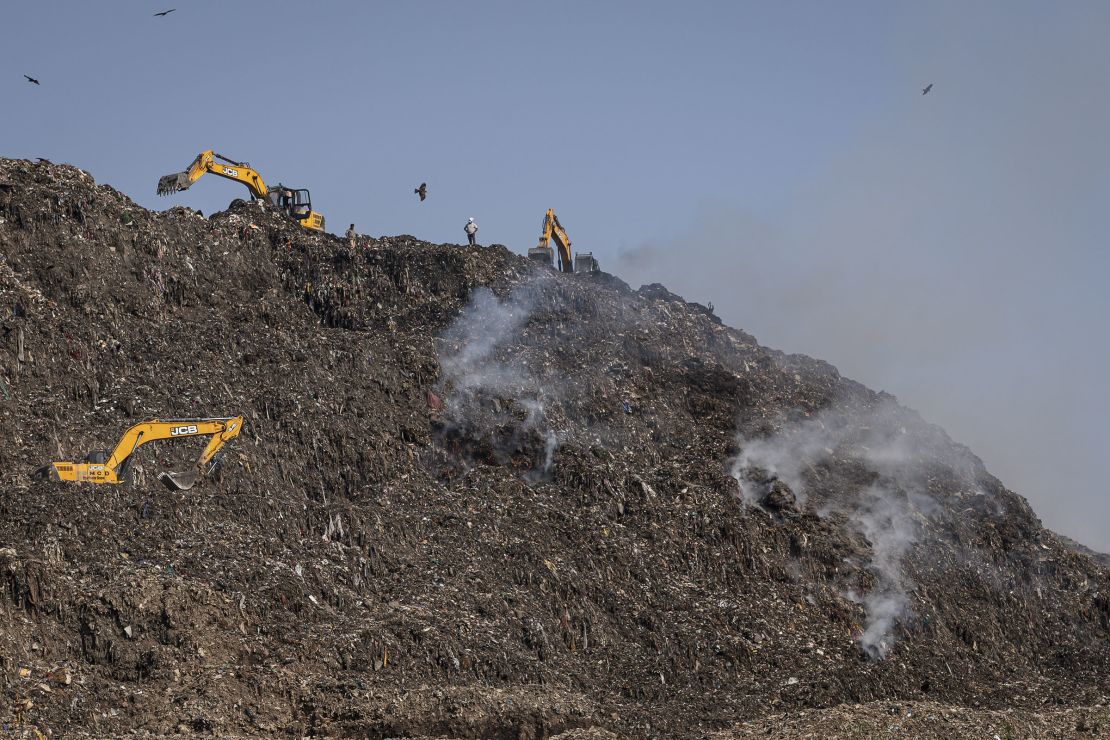
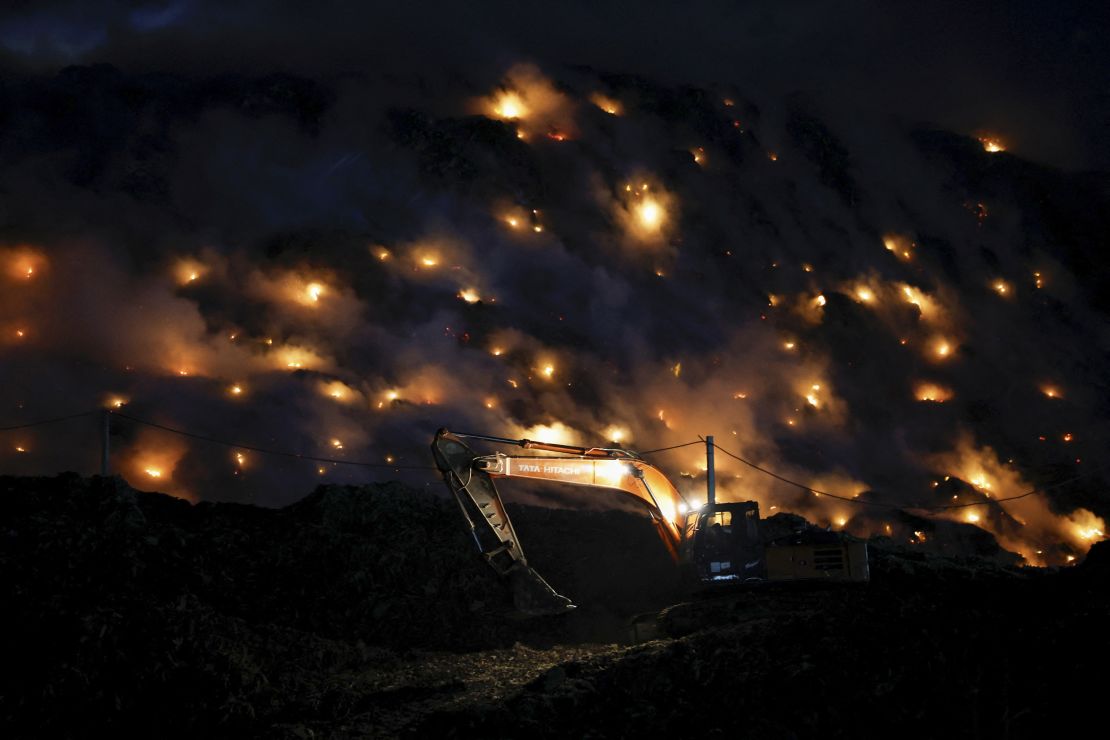
Every year, as mercury levels soar during New Delhi’s scorching summers, the city’s landfills burst into flames, with rotting waste adding to India’s climate-heating methane gas emissions.
Methane is the second most abundant greenhouse gas after carbon dioxide but is a more potent contributor to the climate crisis because it traps more heat. India creates more methane from landfill sites than any other country, according to GHGSat, which monitors emissions via satellites.
The trash mountain at Ghazipur is just one of some 3,000 Indian landfills overflowing with decaying waste and emitting hazardous gases, according to a 2023 report from the Center for Science and Environment, a nonprofit research agency in New Delhi. Standing at 65 meters (213 feet), it is nearly as tall as the historic Taj Mahal, and an eyesore that towers over surrounding homes, harming residents’ health.
Exposure to methane can aggravate lung diseases, cause asthma and increase the risk of stroke, according to the non-profit Global Clean Air Initiative.
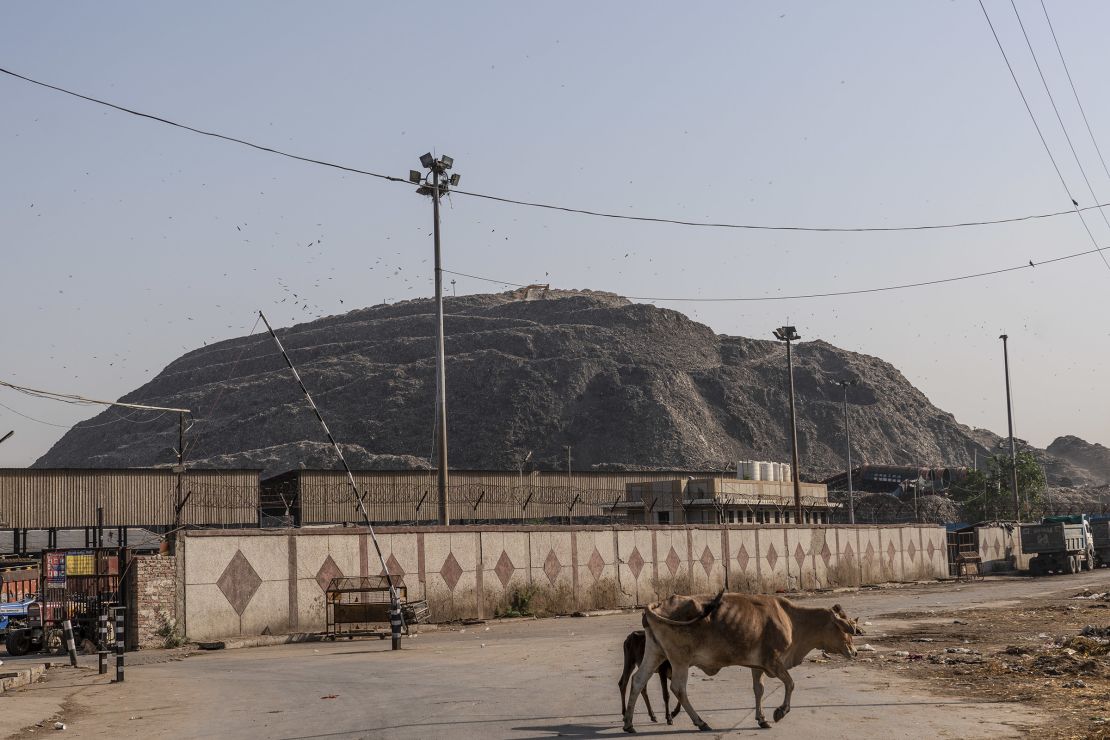
Methane emissions aren’t the only hazard stemming from landfills. Over decades, toxins have seeped into the ground, polluting the water supply for thousands living nearby.
At Bhalswa, one of Delhi’s other large landfills, residents in 2022 complained of deep, painful skin gashes and respiratory issues from years of living near the hazardous mound.
Struggle to find solutions
More than 2,300 metric tons of solid waste arrives at the Ghazipur dump every day, according to a July 2022 report by a committee tasked with reducing fires there.
The Municipal Corporation of Delhi deploys drones every three months to monitor the size of the trash mountain and is experimenting with ways to extract methane from it, the report said.
But authorities are struggling to keep up with the flow of trash at the site, which surpassed its capacity in 2002.
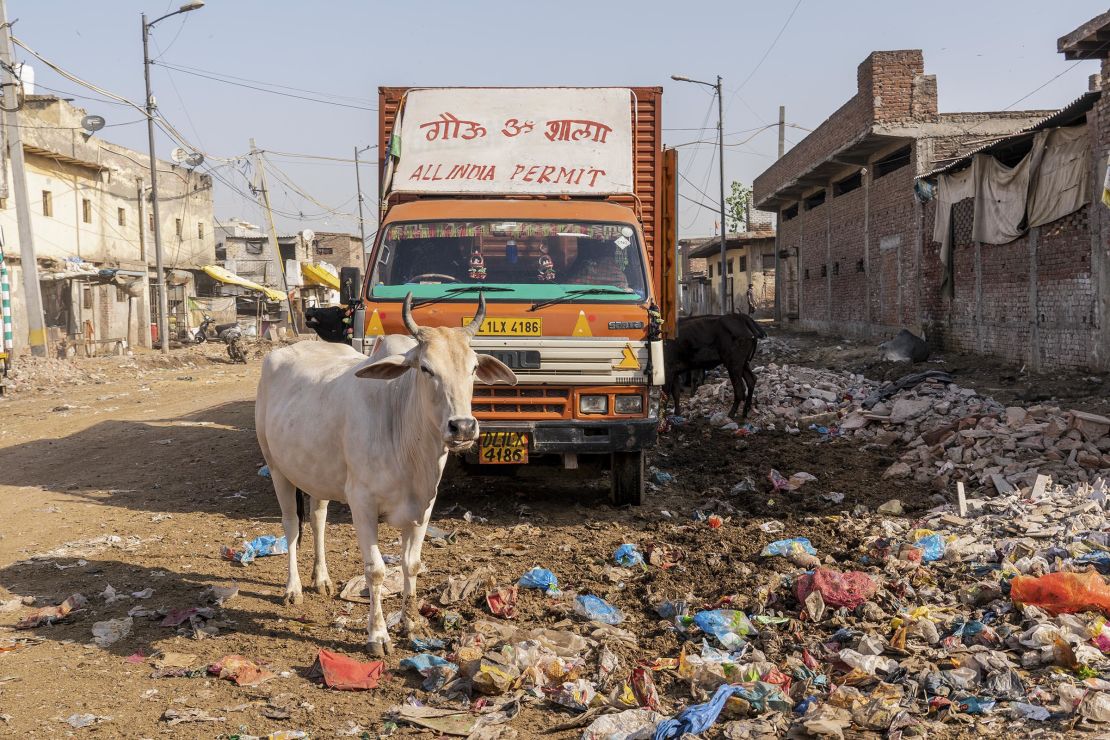
The committee said bio-mining to extract methane had been slow and it was “highly unlikely local authorities would achieve their target of “flattening the garbage mountain” this year.
Solutions to the waste problem were outlined in a 2019 Indian government report, which recommended formalizing the recycling sector and installing more compost plants. But while some improvements have been made in the country, such as better door-to-door garbage collection and processing of waste, India’s landfills continue to grow.
As part of his “Clean India” initiative, Indian Prime Minister Narendra Modi has said efforts are being made to remove garbage mountains and convert them into green zones. That goal, if achieved, could relieve some of the suffering of those living in the shadows of enormous dump sites – and help the world lower its greenhouse gas emissions.
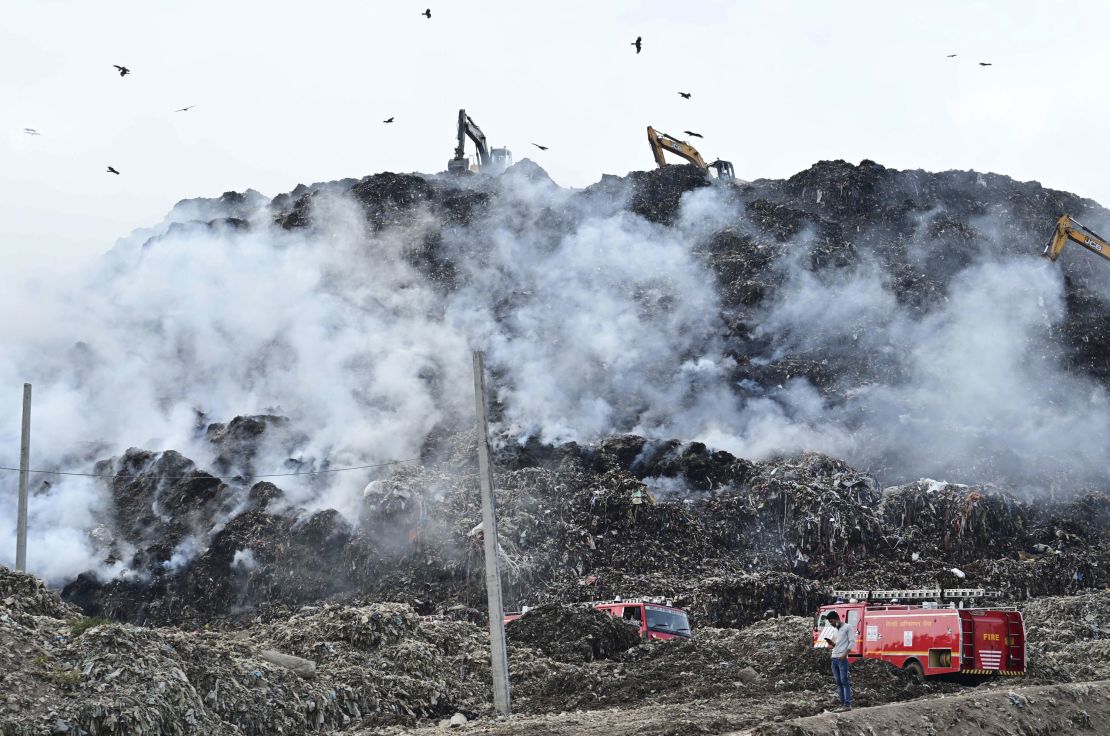
But while India wants to reduce its methane output, it hasn’t joined 155 countries that have signed up to the Global Methane Pledge, a pact to collectively cut global emissions by at least 30% from 2020 levels by 2030. Scientists estimate the reduction could cut global temperature rise by 0.2% – and help the world reach its target of keeping global warming under 1.5 degrees Celsius.
India has said it won’t join because most of its methane emissions come from farming – some 74% from farm animals and paddy fields versus less than 15% from landfill.




